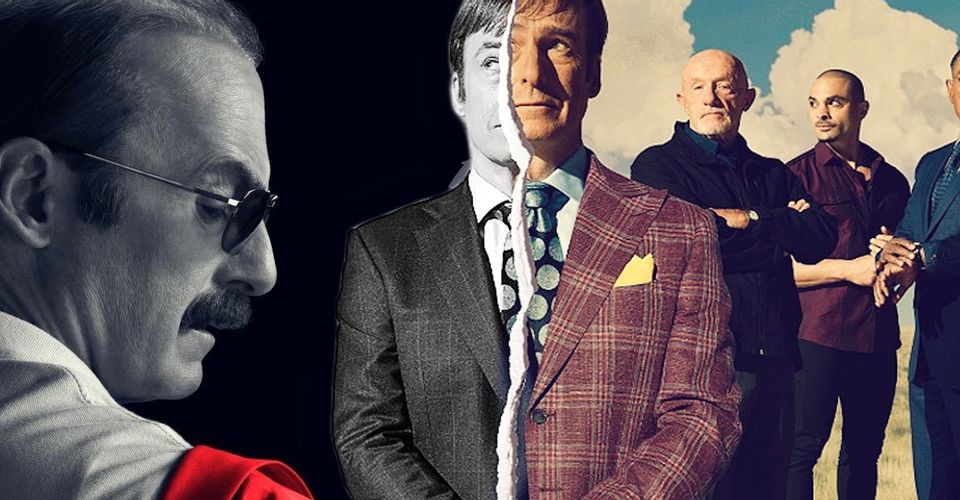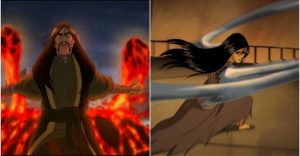Better Call Saul Season 6 Hints At Perfect Ending For Gene’s B&W Story

Will Better Call Saul‘s Gene timeline show its true colors in season 6? For the most part, Better Call Saul is a prequel to Breaking Bad that covers Jimmy McGill’s early life and explains how he came to be Walter White’s “criminal lawyer.” We see flashes of Jimmy’s youth, his conman years as “Slippin’ Jimmy,” his brief stint as a legitimate lawyer, and the subsequent descent into “Saul Goodman.” Uniquely, Better Call Saul has weaved a second timeline into its narrative. Dubbed the “Gene” timeline, these scenes take place after Jimmy’s final appearance in Breaking Bad, hiding in Nebraska under the pseudonym Gene Takavic.
Gene’s Better Call Saul sequences are denoted by their black-and-white coloring, which is designed to contrast with the prequel timeline’s standard color. In another special motif, Better Call Saul‘s sequel scenes only occur in the premiere of each season, meaning Gene has featured in a mere 5 episodes thus far. Given how much ground Better Call Saul has to cover, that’s almost certain to change in season 6. Perhaps Gene’s story will be spread across multiple installments, or maybe we’ll get one or two entire episodes dedicated solely to Gene.
Better Call Saul‘s season 6 poster hints at how Gene’s storyline will be handled – but also promises the perfect change to the future timeline’s presentation. AMC’s official marketing poster shows Gene Takavic – still in his usual black-and-white color grading – pulling on Saul Goodman’s suit jacket, which is a bright shade of red. On one hand, the imagery suggests Jimmy will dump being “Gene” altogether in Better Call Saul‘s final season (which makes sense, given the identity has already been rumbled), and revert to his beloved Saul Goodman persona – a life he has very obviously missed while hiding in Nebraska. Digging deeper, however, the poster seems to promise Better Call Saul season 6 will actually move Gene’s timeline out of black-and-white and into glorious technicolor.

Since running two color narratives simultaneously defeats the object of using black-and-white in the first place, a switch would only make sense after Better Call Saul‘s prequel timeline has finished. Perhaps Better Call Saul season 6 begins in the traditional way, bouncing between Jimmy McGill’s earlier timeline (still in color) and Gene’s sequel era (still in grayscale). Once all pre-Breaking Bad business has been brought to a close by the Better Call Saul series finale, only the Gene timeline needs resolution. Jimmy’s future self sheds his fake identity and embraces “Saul Goodman” once again, and this causes the screen to wash from black-and-white to color. The very final scenes of Better Call Saul would be set during the sequel years… but play out without the usual monochrome filter, and that might also explain why there are no Gene shots in Better Call Saul‘s season 6 trailer whatsoever – to avoid ruining the surprise switch.
Better Call Saul‘s Gene timeline transitioning from black-and-white to standard color in season 6 would perfectly encapsulate Jimmy McGill’s ending. All while Jimmy was forced to hide his true identity, pretending to be “Gene Takavic” and avoiding his usual realm of legal chicanery, he existed in a world of black-and-white – dull, lifeless, and miserable. When he returns to being Saul Goodman, the flip to color represents meaning and vibrancy flooding back into Jimmy’s life now he’s chosen to drop the Cinnabon manager pretense.
Better Call Saul season 6 ending its Gene timeline in color also promises those final scenes will symbolize a truer continuation of Breaking Bad. Though it’s perfectly obvious the sequences in Nebraska happen after Jimmy’s final Breaking Bad appearance, the lack of coloration prevents Better Call Saul‘s future timeline feeling like an actual sequel in mold of El Camino – and that’s likely by design. If Better Call Saul ends its prequel narrative then transitions its Gene story to full color to focus on Jimmy’s future, those final scenes will feel like a proper closing chapter to the entire franchise.
About The Author


















